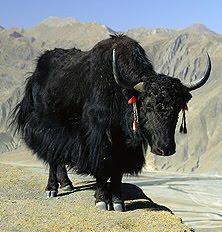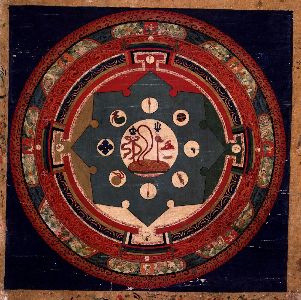Simhanada Lokeshvara: Lion's Roar
A new outline page has been added for the form of Avalokiteshvara known as Simhanada 'Lion's Roar.' Originally taught by the Indians Chandragomi and Suvarnadvipa, it entered Tibet in the 11th century with Rinchen Zangpo, Jowo Atisha, Bari Lotsawa and others. The deity form and meditation practices are now found in all traditions of Tibetan Buddhism. A stone sculpture relief of the deity can also be found carved on a rock face in Hangzhou, China, at the edge of the Pacific Ocean. Simhanada Lokeshvara was popularized in Mongolia and China by Sakya Pandita Kunga Gyaltsen (1182-1251) when he cured Godan Khan of leprosy using the special healing techniques of Simhanada.











